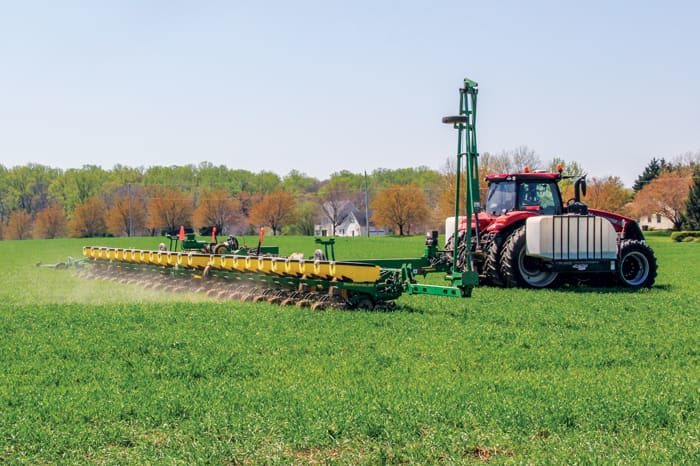No-Till Farmer
Get full access NOW to the most comprehensive, powerful and easy-to-use online resource for no-tillage practices. Just one good idea will pay for your subscription hundreds of times over.

The following article is based on Trey Hill's presentation at the 2019 National No-Tillage Conference. To watch other presentations from the event, click here.
In an effort to curb nutrient pollution in the Chesapeake Bay, Maryland farmers have been met with strict regulations on when, how and how much fertilizer they can apply to their fields.
But for Trey Hill, it’s not a problem. Located less than a mile from the bay in Rock Hall, Md., his operation, Harborview Farms, has been following a nutrient management plan that aligns with Maryland’s recent laws for 20 years.
At the 2019 National No-Tillage Conference, Hill explained how he’s using dual fertilizer applicators, 360 Y-Drops and Pioneer’s Encirca program to better utilize his nitrogen (N) for his 10,000-acre corn, soybean and wheat operation, especially since he’s almost always planting green into cover crops.
While Maryland has put restrictions on fall fertilizer applications, it wasn’t an adjustment Harborview Farms had to make, as they have never done any fertilizer application prior to planting.
This also means they don’t use anhydrous ammonia, a decision Hill made for economic reasons. Anhydrous ammonia isn’t readily available to them, he says, which has always made it more cost prohibitive, while 32% liquid N comes in through the Port of Baltimore, so he can buy it as competitively as anyone else.
“Plus, I don’t like the liability associated with anhydrous,” he adds. “I really wouldn’t want to use anhydrous because of what it does to…